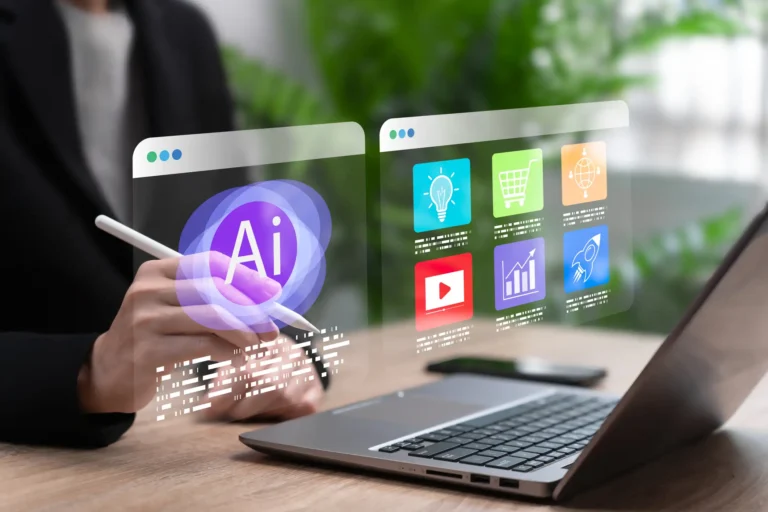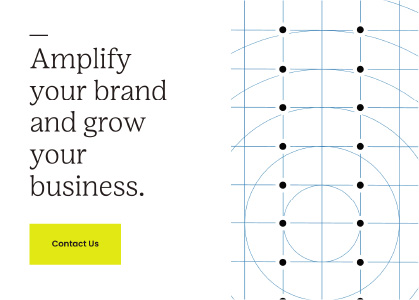As an owner of a brand and marketing agency, I’ve been inundated with articles about generative AI and its ever-evolving role in B2B marketing. Conversations about generative AI are happening everywhere: in my news feed, my inbox and in discussions with coworkers and clients.
For every article that paints AI as a catalyst for a new age of marketing innovation, there’s another that warns about AI’s legal and moral ramifications. This quote from a recent Gartner CMO report sums it up best: “One of the most disorienting impacts of AI on marketing is the upending of our sense of what’s possible.”
AI holds so much promise, but also leads to so many questions. What AI-powered marketing tools should you use? What are the risks associated with AI? Where should you start? As AvreaFoster has spent the last year unraveling the opportunities that AI offers B2B marketers, I want to share what we’ve learned on our agency’s AI journey and, hopefully, help you pave a path forward within your marketing organization.
AI’s impact on B2B marketing is far and wide.
When you’ve been in the B2B marketing business for 30+ years like I have, you’ve seen your fair share of innovations. The rise of the internet in B2B marketing. The growth of content marketing. The shift to digital-first buyers’ journeys. These all have impacted how we shape our approach to digital marketing. But what makes AI different is the immense scale of its reach across nearly every aspect of our business.
From customer research and content creation to hyper-personalization and campaign optimization, AI has quickly become an indispensable tool for modern B2B marketers. One thing to emphasize is that AI is just that — a tool. AI is not a replacement for creative and strategic thinking. It’s a platform that enhances those skills and allows for greater efficiency across teams.
According to a recent Gartner report, “AI is best used as a content enablement tool that’s regulated by human oversight, helping to create, classify, share or optimize content — but not to launch without review.” At AvreaFoster, the human element will remain a core component of our process as we continue to build authentic relationships and make emotional connections through marketing and branding — something AI cannot do.
Once we had a clear sense of AI’s possibilities — and limitations — we were able to establish how we wanted to incorporate AI into our agency workflows, starting with defining our AI goals.
Leveraging the power of AI to improve marketing performance.
When you conduct an internet search for “AI tools for marketers,” Google quickly returns more than 43 million results. Needless to say, AI content is abundant. Where should you start? When AvreaFoster embarked on its AI journey, we identified four areas where we could leverage the power of AI to help us improve the performance of our marketing efforts.
- Build efficiency into content creation
- Streamline repetitive tasks
- Use data to improve marketing performance
- Get smarter, faster
With goals clearly defined, we were better equipped to contain our AI research to those tools that helped us achieve our core objectives. As you begin your AI journey, I suggest you start there — by defining how AI can help your organization drive better business outcomes, whether operations, financial, revenue or marketing.
Dipping your toe into the AI waters.
Like most of the world, our first official foray into AI started with ChatGPT, which we use for quick research or simple content tasks like generating blog headlines or email subject line options. Looking beyond ChatGPT, we researched other AI-powered marketing platforms and quickly realized that AI is already embedded in many of the tools in our current marketing tech stack. Platforms like Adobe, HubSpot and Surfer SEO include generative AI and machine learning as part of their offerings. So our AI journey started there — by embracing the AI capabilities in our current tech stack and then supplementing with new AI platforms.
How does AvreaFoster use AI today? Here’s a sample of our current AI toolkit.
- ZoomInfo for industry intelligence and research on buyer intent
- Adobe Firefly for photo manipulation on purchased images
- HubSpot for identifying optimal times to post content and distribute emails
- Semrush for AI-powered keyword research
- Surfer SEO for keyword optimization on websites and blog posts
- AdCreative.ai for ad versioning, testing and optimization
Dig Deeper
* Required field
New AI solutions are on the horizon.
- AI-driven personalization engines, like Adobe Target, analyze customer data, behavior and preferences to deliver highly relevant content, product recommendations and offers in real time.
- Natural language processing (NLP) tools, such as Google Cloud Natural Language API, analyze and interpret unstructured data from various sources, including social media, customer reviews and support tickets.
- Predictive analytics platforms, like Salesforce Einstein Analytics, analyze vast amounts of data and forecast future trends, behaviors and outcomes.
- Chatbots and virtual assistants allow companies to deliver seamless customer experiences while freeing up teams to focus on more strategic tasks.
Overcoming AI anxiety.
Despite its fast adoption, AI comes with its own challenges and limitations. A recent EY study found that AI is fueling anxiety among business leaders — with 71% expressing concerns about the speed of adoption and the quality of AI outputs. In that same survey, 65% of respondents reported being anxious about whether they are using AI responsibly.
We have those very concerns at AvreaFoster, especially when it comes to the topic of photo and video generation. The question of who, if anyone, owns the copyright to a work created by generative AI is largely unresolved. That’s why we limit our use of generative AI to modifying and enhancing photos, illustrations or videos purchased from reputable sources — and avoid the use of any image or video created solely through AI. We’re committed to using AI the right way and respecting the trademark rights of photographers, illustrators, videographers and other content creators.
“The rise of Generative AI has given more people direct exposure to AI, with largely positive sentiment. An overwhelming 90% say their organization uses at least one AI technology, with GenAI topping the list.”
— EY’s AI Anxiety on Business Survey
So where to start?
A thoughtfully mapped-out plan that is promoted throughout your organization can go a long way toward quick wins. Here are four areas to consider when starting your AI planning.
01
Assess your business needs.
There are countless AI tools out there. Narrow the field by focusing on the specific demands of your industry, your organization and your team.
- Prioritize needs based on internal processes in order to test and get comfortable with the use of AI tools.
- Identify opportunities, especially regarding repetitive tasks, that could be automated.
- Discover areas where automation, predictive analytics or data-driven decision-making could significantly improve efficiency and reduce costs.
02
Complete an audit of your data.
AI relies on quality data sources within your organization, just as it does with accessing public domain data. Bad data in leads to bad responses out.
- Establish policies and procedures to govern the acquisition, management and utilization of data for AI purposes.
- Evaluate datasets for demographic biases, socioeconomic status or historical disparities that could lead to unfair outcomes or discriminatory decisions.
- Ensure compliance with data privacy regulations such as GDPR or CCPA, as necessary.
03
Upskill your team.
AI will not replace you. But your competitor using it will. By upskilling your team, you can reduce costs of recruiting and onboarding.
- Individuals should be able to critically analyze AI models, identify limitations and biases, and make informed decisions based on evidence and reasoning.
- Your current workforce’s intimate knowledge about your business will get you to the finish line much quicker than hiring new talent with the necessary skills.
- Some important AI skills your team should have include prompt engineering, machine learning, programming (Python, R, Java), data analysis and natural language processing.
04
Develop AI governance.
Establish clear policies, guidelines and governance to oversee AI initiatives that ensure ethical, responsible and compliant use of AI.
- Define roles and responsibilities, data access controls, model validation processes and mechanisms for monitoring and mitigating biases or unintended consequences.
- Incorporate principles of accountability, fairness and transparency into your AI governance to build trust and mitigate potential risks.
How will AI shape the future of B2B marketing?
There’s no doubt that AI has revolutionized the way B2B marketers operate and will continue to impact how AvreaFoster creates, optimizes and measures success. What’s next on the AI horizon? Countless innovators are launching new tools that promise to elevate the power of AI. One thing is certain: AvreaFoster will continue to research solutions and embrace tools that help us more efficiently and effectively build B2B brands, create campaigns and optimize the performance of our clients’ marketing efforts.
Even though I feel like we’re racing to catch up, we’ve come a long way in a very short time. AI technology is changing rapidly and most tools are still in the experimental phase. Just today, I received a pop-up message in a very well-known publishing tool that stated, “These features use AI, are early in development, and may not get it right.” Even companies leading the AI charge understand that the technology is evolving.
Let’s continue the AI conversation.
Have a specific AI challenge you want to discuss? Shoot me an email at dave.foster@avreafoster.com and we’ll find some time to talk. Ready for our team to put the AI-powered marketing tools to work on a new brand project or marketing campaign? Let’s connect.



